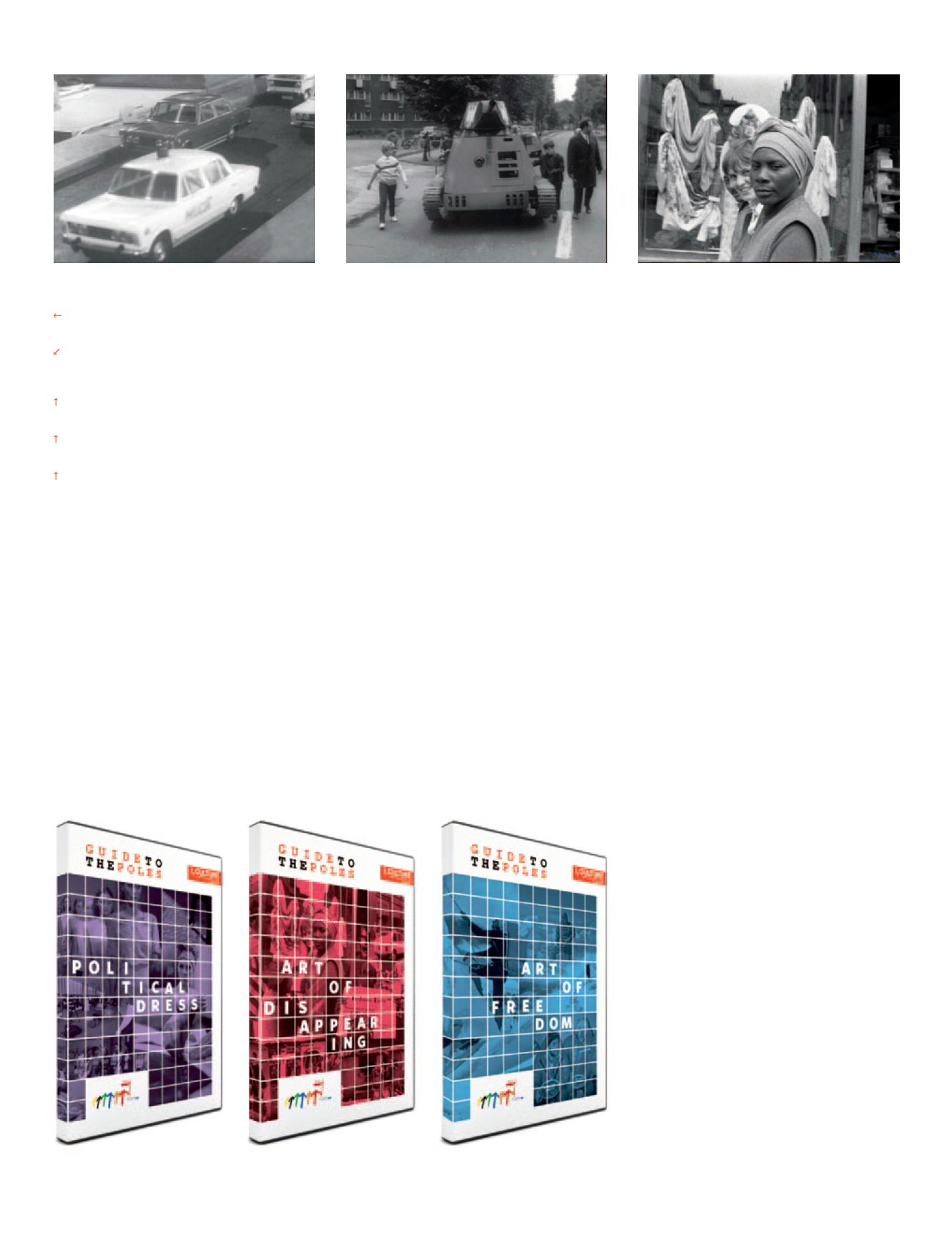
Lech Wałęsa
, from Toys, directed by Andrzej
Wolski, photo by EPA PAP
Andrzej Zawada
, from Art of Freedom, directed
by Wojciech Słota, Marek Kłosowicz, photo by
Bogdan Jankowski
From Toys
, directed by Andrzej Wolski, photo
by WFDiF
From Toys
, directed by Andrzej Wolski, photo
by WFDiF
Haitians
in the People’s Republic of Poland,
photo by J.K.Fiołek
obtain funding – in a country where the average
monthly salary was $20. These barriers could
have stopped them, but instead they increased
their determination. They felt that since they
had managed to leave, they couldn’t return to
Poland without having achieved something
extraordinary. The desire for freedom
and adventure that calls climbers into the
mountains was even stronger in them because
they lived in a drab country in bondage. The
necessity to rely on friends in everyday life and
to never give up in the face of adversity resulted
in a completely new climbing style for which
Jerzy Kukuczka, Krzysztof Wielicki, and Wanda
Rutkiewicz became famous.
The documentary
Political Dress
is about fashion
during the People’s Republic of Poland. The
story begins in the Stalinist years, when you
could get arrested for wearing colourful socks.
Then the film moves on to the early 1960s,
when French styles were in fashion, then to the
flower children years, concluding with the punk
period. Though the styles of these periods were
very different, they had one thing in common:
the well-cut jackets, the hippie-style frayed
bell bottoms, the punk-style leather clothes
decorated with safety pins and patches – they
all expressed rebellion against the surrounding
reality. It was an expression of inner freedom,
all the more noteworthy in that it cost a huge
effort. You couldn’t just buy fashionable clothes
in the shops back then. You had to look for them
in local marketplaces (and spend many months’
savings on them) or make them yourself. The
French daily
Le Monde
wrote in the 1970s that
Polish women were among the best dressed in
Europe. How was that possible? The film seeks
to answer this question and many more.
Games and toys of the People’s Republic of
Poland period are the subject of the film
Toys
.
Children in communist Poland had to make do
with much more modest toys than children in
the West, but consequently this gave place to
fertile imaginations. The cycling Peace Race
reconstructed with the help of bottle caps
filled with modelling clay and decorated with
miniature flags was more fascinating than
playing with expensive model cars. The film
includes fragments of newsreels from the years
1945-1989 showing Polish children at play, and
also the reminiscences of famous Poles: Lech
Wałęsa, Wojciech Pszoniak, and Henryk Wujec.
The directors of the last and probably most
unusual film of the
Guide to the Poles
series are
Academy Award nominee Bartosz Konopka
and Piotr Rosołowski.
Art of Disappearing
is
a documentary about Poland in the 1980s
seen through the eyes of a Haitian voodoo
priest, Amon Cazalen. Cazalen came here at
the invitation of Jerzy Grotowski, the theatre
director, and was so fascinated with Poland that
he decided to stay longer, becoming an unusual
witness of Polish history. The film is a truly
unique document full of unusual thoughts about
Polish people and their national character.
»
The film collection
Guide to the Poles
report season 2010/2011
39


